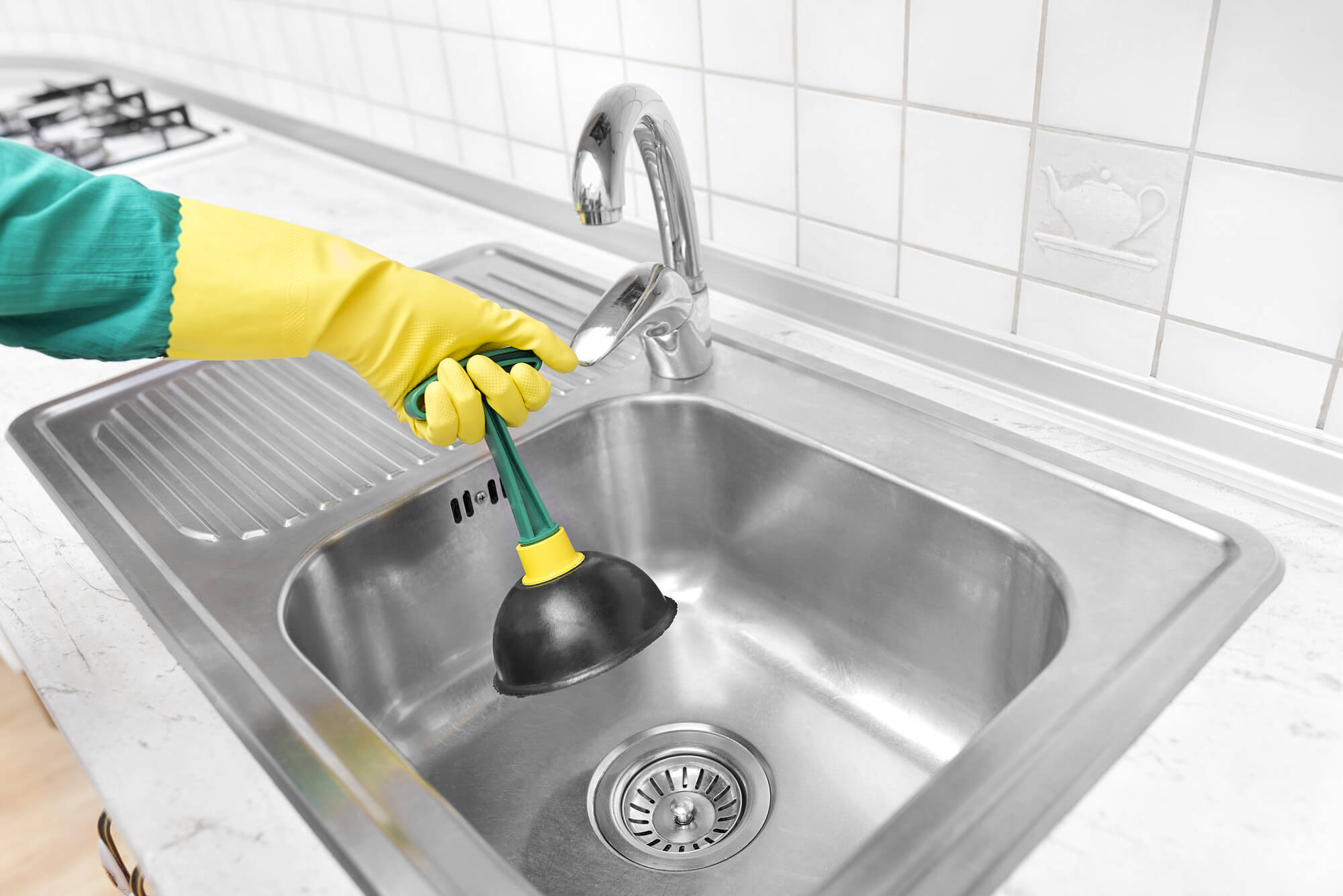We've found the article pertaining to Solved! How to Fix a Slow Sink Drain listed below on the web and think it made good sense to relate it with you here.

Intro
We have actually all been there: You're cleaning your teeth or washing your hands, and you see the water pooling in the sink. Instead of promptly swirling down the tubes, it remains, turning your once-refreshing early morning routine right into a mini swamp scene. A slow-draining sink isn't just frustrating; it's usually a sign of larger plumbing concerns lurking underneath the surface. The good news is that a lot of slow-draining sinks can be fixed with a little expertise, a few standard devices, and some persistence. Prepared to tackle this task head-on? Allow's roll up our sleeves and dive right in.
Recognizing the Causes of a Slow-Draining Sink
Prior to you start poking around in your pipelines, it aids to know what might be triggering the slowdown. Comprehending the source makes it much easier to select the best fix.
Devices and Products You'll Require
The right tools make all the distinction. The good news is, you will not need a completely equipped plumbing professional's van to get the job done.
Step-by-Step Guide to Taking Care Of a Slow-Draining Sink
Currently, allow's enter the nitty-gritty. This step-by-step process will certainly lead you via simple techniques to recover your sink's drain.
Step 1: Remove and Clean the Stopper
Usually, the stopper (that little plug you push down to block water) is the initial culprit. Remove it very carefully and clean off any type of hair or substance trapped around its base. Rinse it thoroughly prior to putting it back in position.
Action 2: Use a Bettor to Dislodge Debris
Got that plunger all set? Position it over the drain and offer it a couple of firm pumps. The idea is to produce suction that can loosen up any kind of clog. If you see littles debris floating up, you get on the ideal track.
Action 3: Attempt a Drainpipe Snake or Cord Hanger
If the plunger does not do the trick, it's time to bring out the drainpipe snake. Gently feed it into the drainpipe and twist as you go. You might feel some resistance-- that's most likely the clog. Maintain turning and drawing up until you get rid of the blockage. If you do not have a drainpipe serpent, a corrected wire hanger can operate in a pinch.
Tip 4: Use a Do It Yourself Drain Cleaner
A natural cleaner made from baking soft drink and vinegar can break down residual crud. Pour half a cup of cooking soda right into the drain, adhered to by half a mug of vinegar. Let it fizz for around 15 minutes, after that flush with hot water. This chain reaction often does wonders for small blockages.
Step 5: Rebuild and Examine the Sink
Placed everything back together and run the faucet. Does the water now swirl away at a decent rate? If yes, give yourself a pat on the back. If not, don't despair-- there are still a couple of more tricks up your sleeve.
Necessary Tools for Do It Yourself Fixes
A bettor is your go-to starting factor. A little, sink-sized plunger develops suction that can displace minor blockages. For even more relentless clogs, a drainpipe snake (often called a plumbing professional's auger) functions wonders. A set of gloves, a flashlight, and possibly a set of protective goggles are also handy.
Advised Cleansing Solutions
Mild dish soap and hot water can help break down greasy accumulation. A blend of cooking soda and vinegar is a time-tested natural home remedy, and enzymatic cleaners provide an even more green technique. Keep chemical drainpipe cleaners as a last resource, as they can be rough on your pipes.
Typical Offenders Behind Slow Drain
So, what's clogging things up? Generally, it's a mix of day-to-day debris-- believe hair, soap scum, toothpaste residue, and remaining food bits. Gradually, these tiny bits gather and cling to the pipe wall surfaces, progressively tightening the flow and making it harder for water to go through. In some cases, natural resource from difficult water can likewise add to the substance, creating the ideal tornado for stubborn clogs.
When is it Time to Take Action?
If you see the water draining slower than common, it's a good idea to step in quicker instead of later. Waiting too long can result in finish clogs, unpleasant smells, or even pipe damage. If the water takes more than a few secs to clear out after shutting off the tap, consider it a warning and prepare yourself to place on your do it yourself hat.
Safety And Security First: Safety Measures and Prep work
Before you launch into unclogging mode, think about safety. You're handling possibly unclean water and debris, so slip on a pair of handwear covers. If you're utilizing chemical cleaners, ensure the area is well-ventilated and follow the directions on the label.
Protective Equipment and Work Area Arrangement
Lay down some old towels or dustcloths around the sink area to capture splashes. Eliminate any things that might enter your means, like soap dispensers or toothbrush owners. Make sure you have great lights-- grab a flashlight if required.
Different Methods for Stubborn Clogs
Not all blockages are developed equivalent. If your sink still refuses to work together, take into consideration these alternate remedies.
Sodium Bicarbonate and Vinegar Approach
We currently touched on this, however it deserves keeping in mind once more. This mild, eco-friendly approach is more secure than chemical cleansers and usually fairly reliable.
Chemical Drain Cleansers
Enzyme-based cleansers make use of natural germs to absorb raw material. They're a superb option if you're wanting to avoid harsh chemicals. Simply bear in mind, they might take a bit longer to function their magic.
Chemical Drain Cleaning Company: Benefits And Drawbacks
Chemical cleaners can blow up with tough obstructions fast, yet they're not without disadvantages. They can generate warm and fumes, damage pipelines if made use of excessively, and present environmental dangers. Utilize them sparingly, and always comply with the instructions carefully.
Preventive Measures to Maintain Your Sink Flowing
Prevention is the very best treatment. By adopting a couple of straightforward habits, you can keep your sink from reducing to begin with.
Regular Cleaning Routines
Clean down the sink container and component area routinely. Remove hair or food bits prior to they have a possibility to wash down the drain.
Avoiding Hazardous Compounds Down the Drain
Think twice before dumping coffee premises, oil, or coarse vegetable scraps down the sink. These culprits hold on to pipeline walls, creating clogs over time.
Regular Maintenance Checks
Schedule a fast monthly examination. Run hot water through the sink for a couple of minutes, taking note of the circulation. If it seems slow-moving, act quick before it ends up being a full-on blockage.
When to Call a Specialist Plumbing
Sometimes, no matter how hard you try, that clog just won't move. That's when it's time to bring in the pros.
Signs That Indicate a Much More Serious Issue
If your sink drains pipes slowly regardless of multiple attempts, or if you observe water supporting in various other fixtures (like your shower or bathroom), you may have a much more severe pipes concern prowling deeper in the system.
Balancing DIY Efforts with Expert Help
While do it yourself can conserve you money and provide a sense of accomplishment, there's no shame in calling an expert. A specialist plumbing can evaluate your whole pipes configuration, guaranteeing there's no underlying damage or lasting trouble that might cost you more later on.
Comparing Prices and Long-Term Solutions
Before choosing, consider the big picture. A cheap, quick fix may solve the issue momentarily, yet investing in an extra permanent solution can save you money and stress and anxiety in the long run.
Considering the Expenses of DIY vs. Professional Solutions
Do it yourself fixes often cost little more than the price of a plunger or a container of cooking soft drink. Professional solutions, on the other hand, come with a price tag but might prevent repeated concerns and pricey fixings later on.
Buying Quality Fixtures and Upgrades
If your sink's layout adds to constant clogs, it may be worth upgrading to higher-quality fixtures or modifying the plumbing layout. Consider this a financial investment in your home's capability and comfort.
Conclusion
A slow-draining sink can seem like a minor irritability, yet it's typically an indication that your pipes requires a little TLC. By understanding the root causes, using the right devices and methods, and dedicating to basic safety nets, you can keep your sink moving openly. And when all else stops working, never ever be reluctant to call in an expert-- your home's plumbing deserves the financial investment in treatment and maintenance.
4 Tips to Fix a Slow Draining Sink
Removing the Pop-Up
This is a great place to start when it comes to troubleshooting a slow draining sink. If your sink has a pop-up, carefully take it out and remove debris that has built up around the tool. This will also allow you to see if there are any significant blockages in the drain that you can pull out on your own to help clear up the issue.
Use a Zip-It Tool
Like a snake for a large drain, a zip-it tool helps clear out any debris or hair from a sink drain. A tool like this can be used with a drain that pops out or not as it s thinner than most snake-like tools.
Use a Drain Cleaner
Whether making an at-home cleaner or buying a solution at the store, this is a common fix many turn to when it comes to a slow draining sink. There are several options available for purchase at local supermarkets, but for those who prefer to create their own solution, one of the most common is the following.
How to Unclog a Drain Naturally
Pour boiling water down the drain Pour cup of baking soda down the drain Pour cup of vinegar down the drain Wait 10 minutes Pour boiling water down the drain again Turn on the hot water faucet to clear out the solution Use a Plunger
As a worst-case scenario option, a plunger may be a good option for those who are still struggling to get debris out of their drain. This could be especially useful if there is a large item that you suspect may be significantly stuck down the drain.
https://www.abaileyplumbing.com/blog/2021/august/4-tips-to-fix-a-slow-draining-sink/

I hope you liked our piece about Three Common Ways to Fix a Slow Drain. Thanks so much for finding the time to read our blog post. Are you aware of anybody else who is looking into 4 Tips to Fix a Slow Draining Sink? Be sure promote it. Thanks a lot for taking the time to read it.
Call Today
 Jenna Jameson Then & Now!
Jenna Jameson Then & Now! Michael Fishman Then & Now!
Michael Fishman Then & Now! Julia Stiles Then & Now!
Julia Stiles Then & Now! Macaulay Culkin Then & Now!
Macaulay Culkin Then & Now! Tonya Harding Then & Now!
Tonya Harding Then & Now!